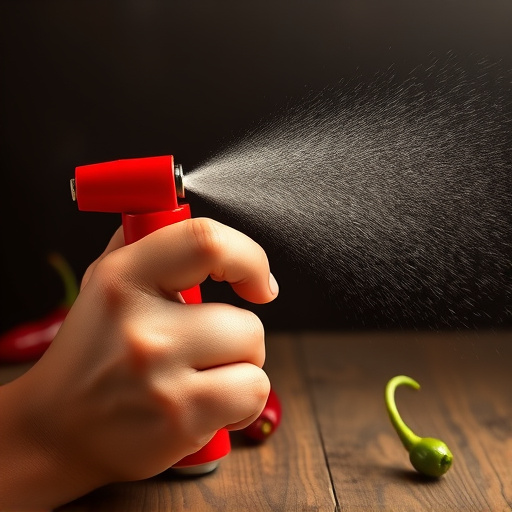Pepper shot pepper spray is a specialized non-lethal weapon used by law enforcement for crowd control and self-defense, firing a concentrated stream of capsaicin to induce temporary blindness and immobilize targets. It offers tactical advantages in de-escalating tense situations, especially effective against drug-influenced or mentally distressed individuals. However, its use requires strict protocols, training, and maintenance to balance safety and effectiveness while adhering to legal and ethical standards, with considerations for bystanders and medical conditions.
“Unleashing a powerful tool in law enforcement, pepper shot pepper spray has emerged as a game-changer in tactical scenarios. This comprehensive guide delves into the intricacies of this specialized agent, offering a detailed understanding of its composition, deployment, and impact on modern policing strategies.
From enhancing officer safety to de-escalating high-risk situations, pepper shot provides a strategic advantage. However, it also raises crucial questions about effectiveness and safety that must be addressed for responsible usage.”
Understanding Pepper Shot Pepper Spray: A Comprehensive Overview
Pepper shot pepper spray is a specialized non-lethal weapon used by law enforcement for crowd control and self-defense situations. Unlike traditional pepper spray canisters, which emit a cloud of aerosol, pepper shot sprays a concentrated stream of capsaicin, the chemical responsible for the burning sensation associated with chili peppers. This innovative design allows officers to target specific individuals or areas, minimizing the impact on bystanders.
The primary advantage of pepper shot pepper spray is its accuracy and control. The directed stream ensures that the active ingredient is delivered directly to the intended target, making it an effective tool for de-escalating tense situations. Additionally, its compact size and ease of use enable officers to respond swiftly and efficiently, providing a powerful deterrent against potential threats while maintaining operational safety.
The Role of Pepper Shot in Law Enforcement Tactics
Pepper shot pepper spray has emerged as a valuable tool in the arsenal of law enforcement agencies worldwide. This non-lethal agent plays a pivotal role in de-escalating potentially dangerous situations, offering officers a strategic advantage during encounters with armed individuals or those exhibiting aggressive behavior. By employing pepper shot, police can temporarily incapacitate a subject, providing crucial time to assess and control the scenario without resorting to deadly force.
The effectiveness of pepper shot lies in its ability to induce a burning sensation and temporary blindness, rendering the target immobile. This tactic allows officers to gain the upper hand, especially when facing individuals under the influence of drugs or those with mental health crises. It also serves as a powerful deterrent, often leading to faster compliance from subjects, thereby reducing the risk of violence for both the public and law enforcement personnel.
Safety and Effectiveness Considerations for Pepper Shot Usage
When considering the use of a pepper shot pepper spray for law enforcement, it’s crucial to balance safety and effectiveness. These powerful tools are designed to incapacitate individuals quickly, but their application must adhere to strict protocols to minimize risks. Safety measures include thorough training for officers on correct usage, ensuring the spray is deployed in accordance with de-escalation strategies, and regular maintenance of equipment to guarantee optimal performance.
Effectiveness lies in understanding the specific circumstances where a pepper shot can be most beneficial. This includes scenarios involving aggressive or resistant subjects where conventional tactics might not be enough. However, it’s essential for law enforcement agencies to evaluate if the use of such force is proportionate and necessary, adhering to legal and ethical guidelines, and considering the potential impact on bystanders or individuals with medical conditions.
